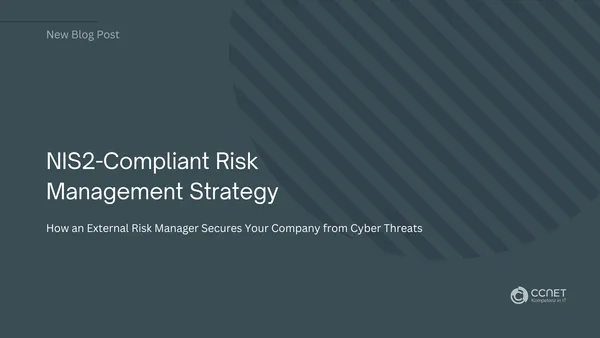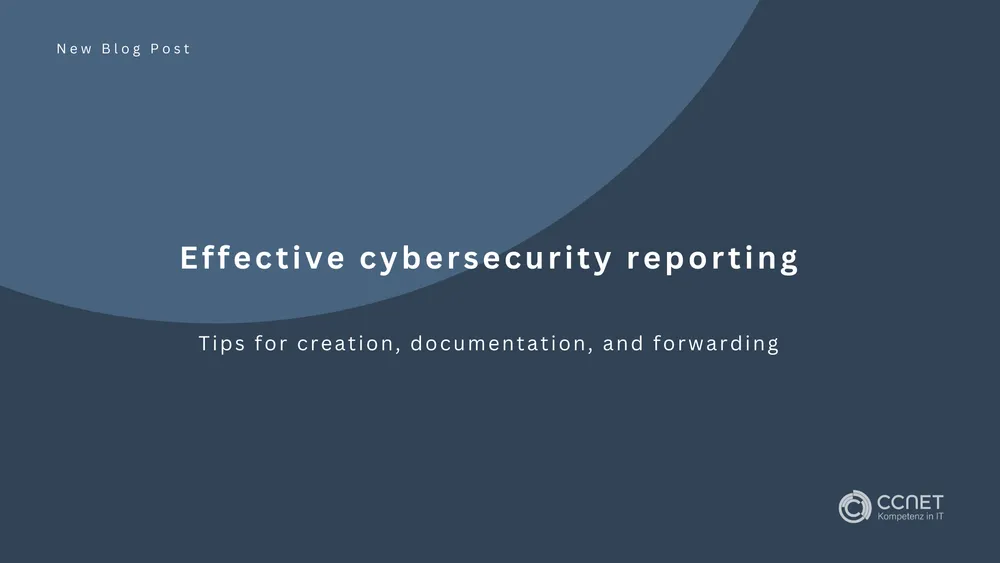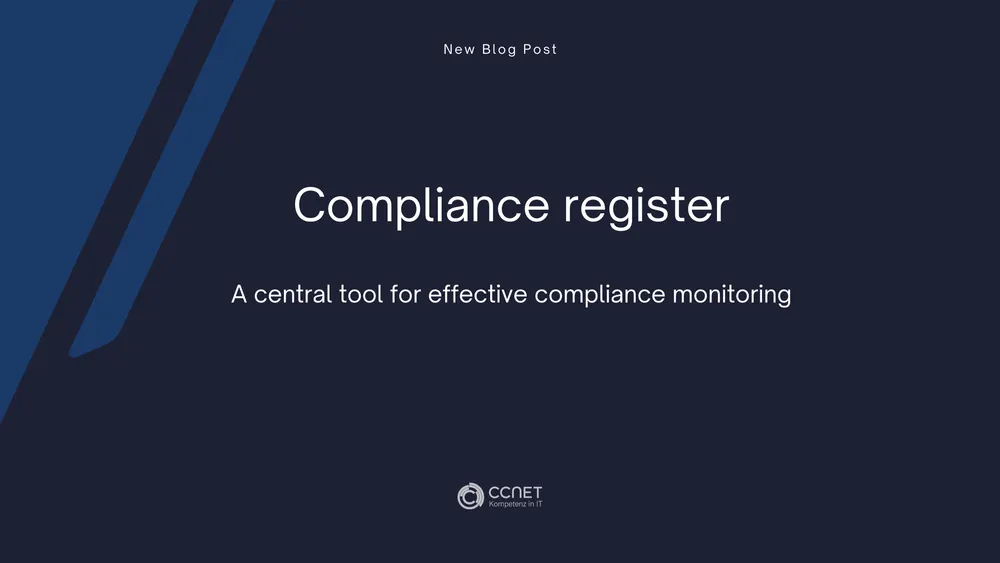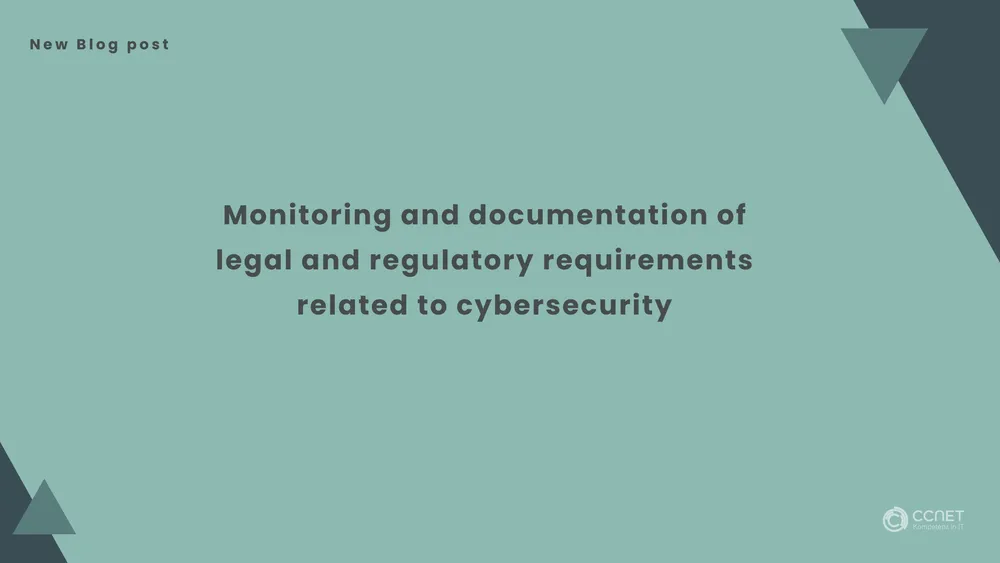
CCNet
Dec 16, 2024 • 3 min read

NIS2-Compliant Risk Management Strategy: How an External Risk Manager Secures Your Company from Cyber Threats
The role of an external IT Security Officer offers a flexible and cost-efficient solution for companies that cannot or do not want to create an internal IT security position. But how exactly does an external IT Security Officer contribute to strengthening cybersecurity and help you meet legal requirements?
What You Need: A Tailored IT Security Strategy
Companies operating critical infrastructures or essential services must develop a comprehensive cybersecurity strategy that meets the requirements of the NIS2 Directive. This means implementing technical and organizational measures specifically tailored to your company’s security risks. An external IT Security Officer brings the necessary expertise to meet these requirements and optimize your security architecture.
But how is this implemented in practice?
How to Implement It: The Role of the External IT Security Officer
The external IT Security Officer is responsible for the complete development, implementation, and monitoring of your IT security strategy. From continuous monitoring to risk assessment and compliance with the NIS2 Directive – this service provides a flexible solution tailored to your specific needs.
1. Development and Implementation of IT Security Strategies: Tailored Solutions
The external IT Security Officer develops a comprehensive IT security strategy specifically tailored to your company’s needs and the NIS2 Directive. These strategies include technical measures such as firewalls and encryption, as well as organizational processes to mitigate risks.
- Solution: In close collaboration with your IT department and management, the external IT Security Officer implements the developed security measures and ensures that your systems are always optimally protected. The security strategy is regularly updated to withstand new threats.
2. Continuous Monitoring of the IT Security Environment: Always One Step Ahead
Constant monitoring of your IT infrastructure is crucial for responding quickly to new threats. The external IT Security Officer continuously monitors your systems, using intrusion detection systems (IDS), firewalls, and other tools to identify potential security gaps early.
- Solution: As soon as anomalies or threats are identified, the IT Security Officer immediately reports them and initiates countermeasures. This ensures that your company remains operational and can respond quickly to attacks.
3. Risk Assessment and Vulnerability Management: Proactively Address Weaknesses
Another key aspect of the external IT Security Officer’s role is the regular risk assessment. This involves analyzing potential vulnerabilities in your IT systems, evaluating threat scenarios, and developing targeted risk mitigation measures.
- Solution: The IT Security Officer conducts regular tests and analyses to identify vulnerabilities. Based on the results, actions are taken to address these vulnerabilities and continuously improve the company’s security posture.
4. Compliance and Audit Support: Acting in NIS2 Compliance
Compliance with the NIS2 Directive is essential for companies operating critical infrastructures. The external IT Security Officer ensures that all the directive’s requirements are met. This includes support during audits and the creation of reports for regulatory authorities.
- Solution: The external IT Security Officer develops processes to ensure compliance, keeps security documentation up to date, and prepares the company for internal and external audits. This minimizes the risk of sanctions or legal consequences.
5. Incident Response Management: Fast and Targeted Reaction to Threats
In the event of a cyberattack, the IT Security Officer coordinates the incident response. Emergency plans and processes ensure that your company can respond quickly and effectively to threats.
- Solution: The IT Security Officer ensures that affected systems are isolated and operational capability is quickly restored. All required reporting obligations according to NIS2 are fulfilled.
6. Training and Awareness Programs: Strengthening Security Awareness
One of the most important measures for improving IT security is employee training. The external IT Security Officer organizes regular training sessions to raise awareness of cybersecurity risks.
- Solution: Targeted training reduces human error, which is often the cause of security incidents. This strengthens the security culture within the company and ensures that all employees know and apply best practices in IT security.
7. Technical Support in Implementing Security Solutions: Tailored Technologies
The IT Security Officer supports the selection and implementation of technical security solutions such as encryption, firewalls, and backup strategies. These solutions are designed to meet the highest security standards and are efficiently integrated into your existing IT infrastructure.
- Solution: The IT Security Officer ensures that all security solutions run smoothly and that your systems are always optimally protected. This includes regular updates of security software and patches.
8. Advising Management and the IT Department: Strategic Security
An external IT Security Officer is not only operational but also advises management on all strategic IT security issues. This helps to make informed decisions about investments in security technologies.
- Solution: Through regular reports and recommendations, the IT Security Officer provides management with a clear overview of potential risks and necessary cybersecurity investments.
Conclusion: Flexibility, Expertise, and NIS2 Compliance
An external IT Security Officer manages and secures your company's cybersecurity needs, giving you the opportunity to flexibly and on-demand utilize highly qualified expertise. With tailored security solutions, regular monitoring, and strategic advice, the external IT Security Officer ensures that your company is always NIS2-compliant and optimally protected against cyber threats.
Take advantage of the flexibility and expertise of an external IT Security Officer to strengthen your cybersecurity strategy and protect your company from the growing challenges of the digital world.


